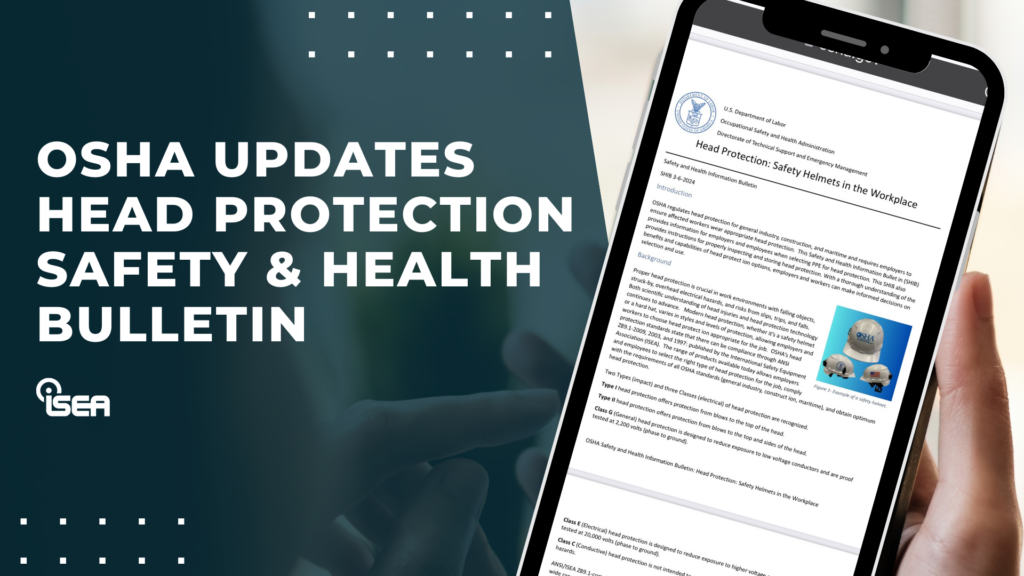New Safety and Health Bulletin Ready for Sharing
The OSHA head protection Safety and Health Information Bulletin (SHIB) has been updated! ➡️Get the new SHIB here.
About SHIBs: Safety and Health Information Bulletins (SHIB) are technical guides that support OSHA’s regulations.
Let’s go back to the beginning: In late November 2023, OSHA published a SHIB on head protection. ISEA and its members noted many inaccuracies and felt it exhibited a bias to one style of head protection.
Why it matters: The SHIB promoted head protection style and look (which are subjective) over the level and type of protection, which are objectively measured against ANSI/ISEA Z89.1 as assessed by a Job Hazard Analysis. We heard from members, end-users, and association partners that the SHIB created confusion. For example, several safety professionals were concerned they would get OSHA citations for having workers use a different level of appropriate protection over others. This was obviously not OSHA’s intention.
ISEA sprung into action: ISEA worked closely with its members to identify inaccuracies in the SHIB. Members also provided many examples of immediate confusion in the marketplace. We relayed all of this to OSHA leadership, and urged changes.
We explained areas where something in the SHIB was incorrect (such as choosing style over protection level), confusing, or misleading.
Catch up quick: An updated SHIB was issued on April 12, 2024. We are pleased the revised SHIB paints a more accurate picture of the complex and evolving issue of head protection. We appreciate that OSHA listened to feedback from ISEA and other stakeholders and was willing to make changes. We urge ISEA members, distributors and other channel partners to share it widely.
What’s next: ISEA worked closely with members to create a “Head Protection Fact vs. Fiction” website to reduce confusion and to best inform the marketplace. In addition, our Head Protection Product Group is hard at work revising Z89.1 to allow for an ANSI/ISEA Z89.1-compliant safety helmet that does not use European standards or test methods.


